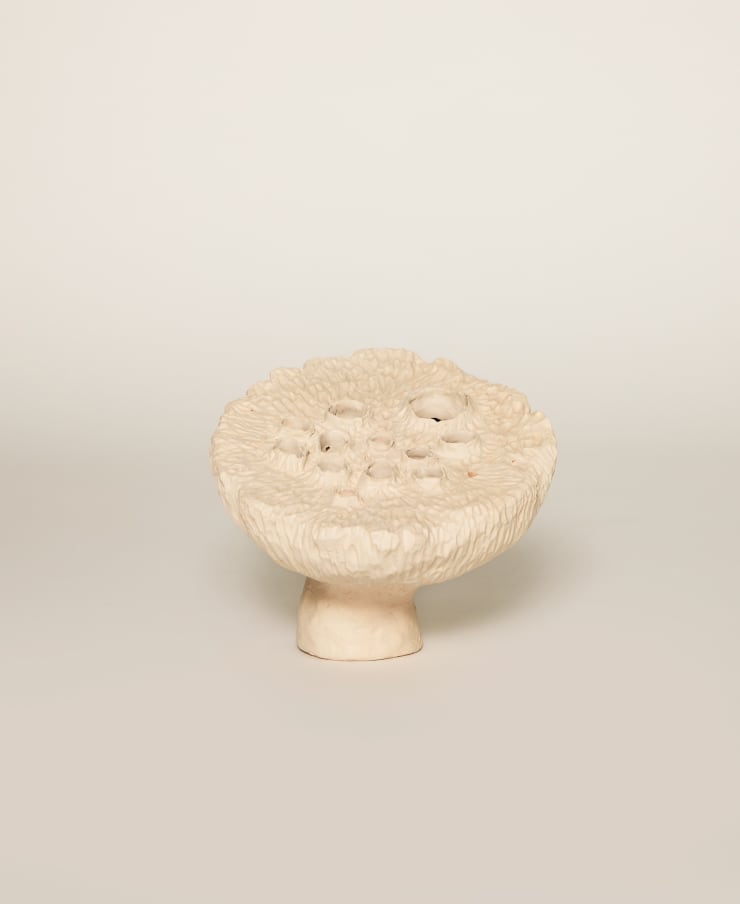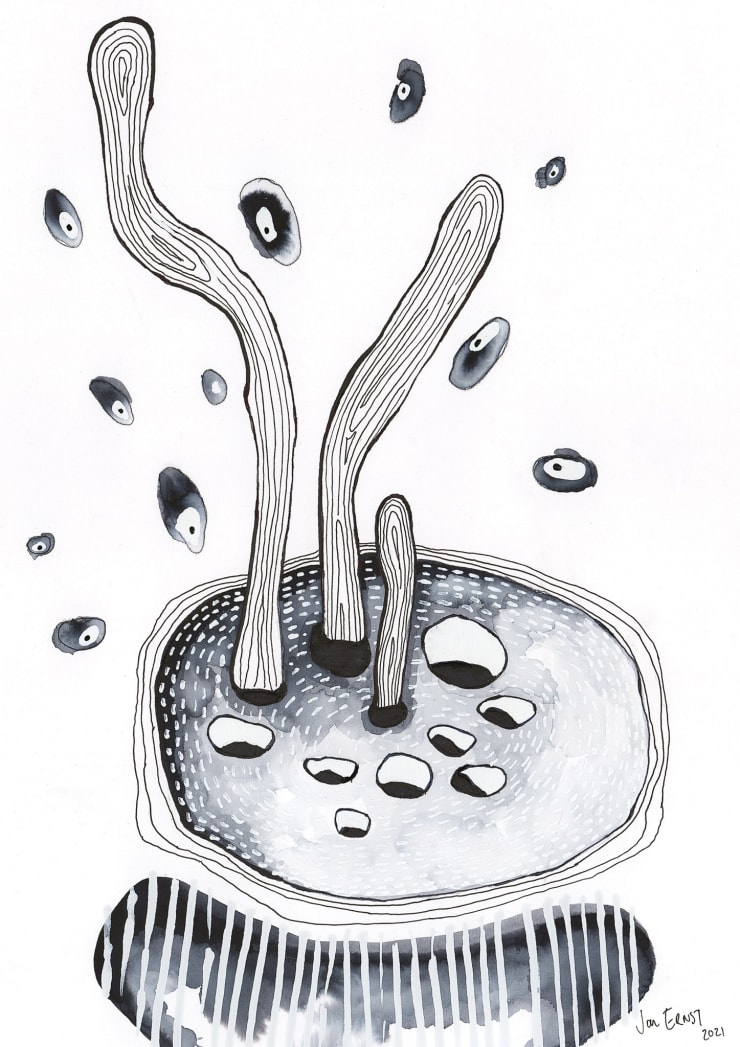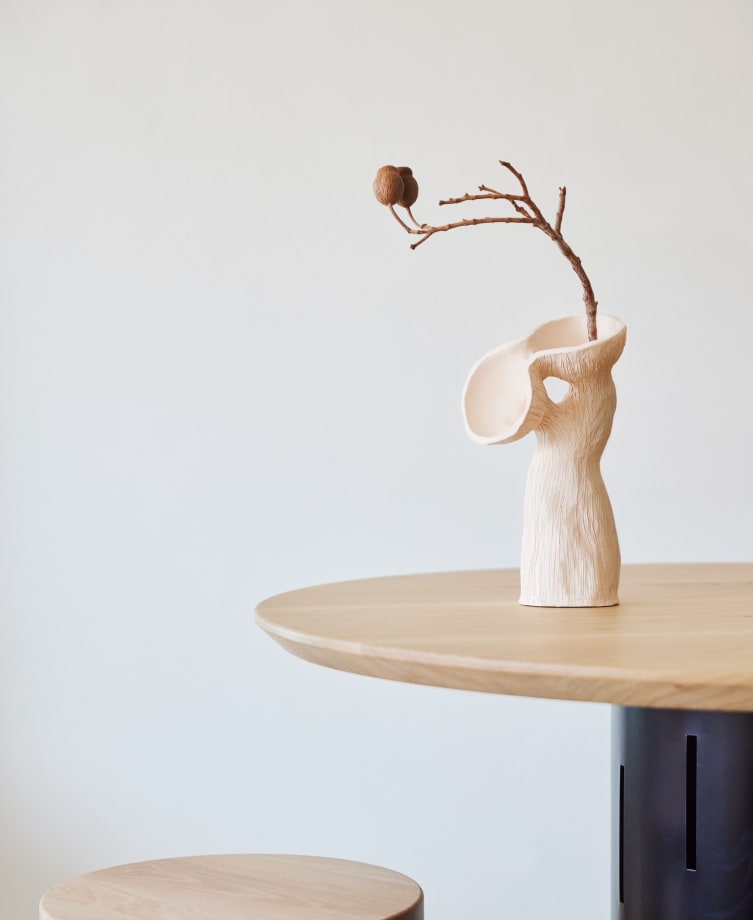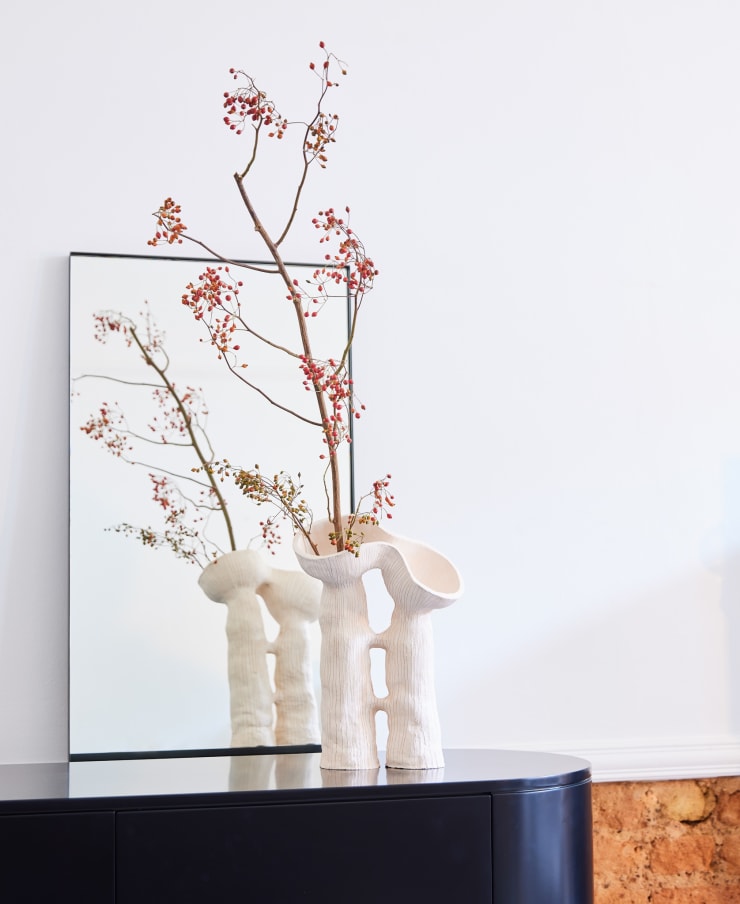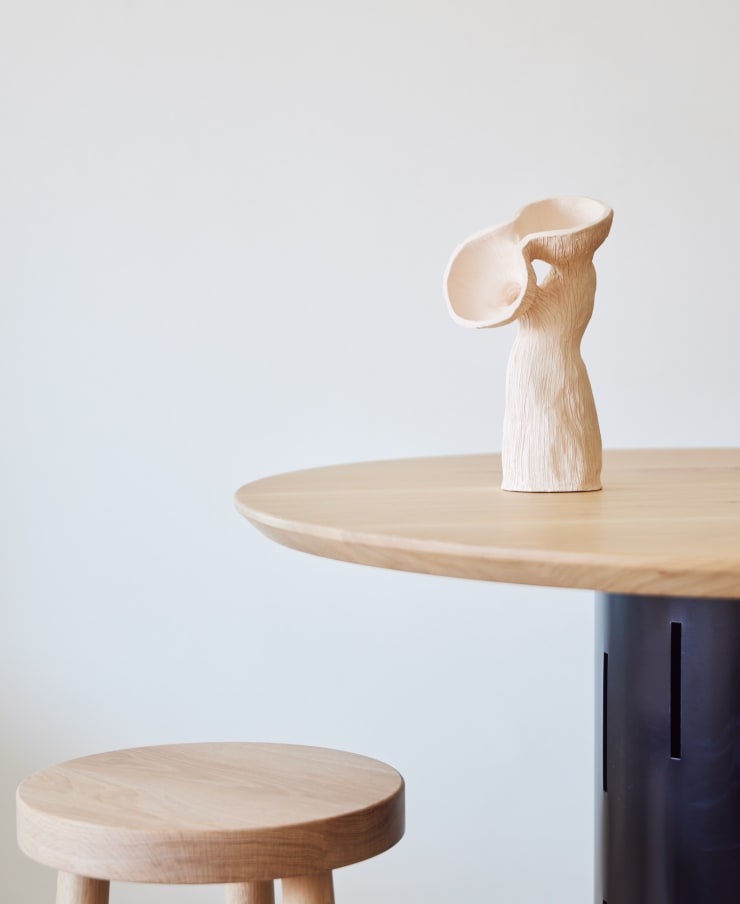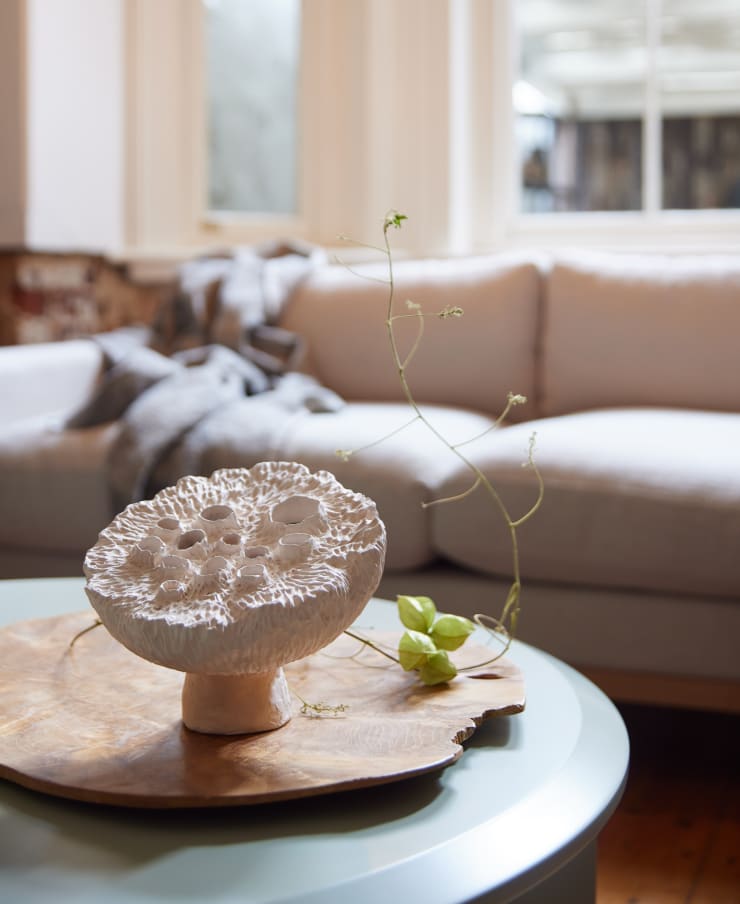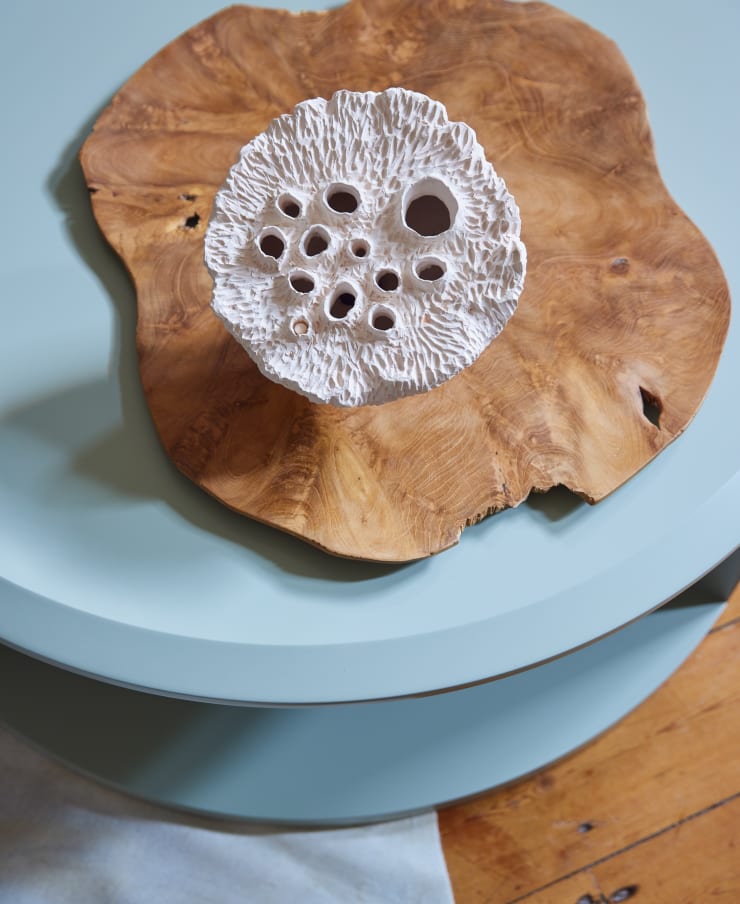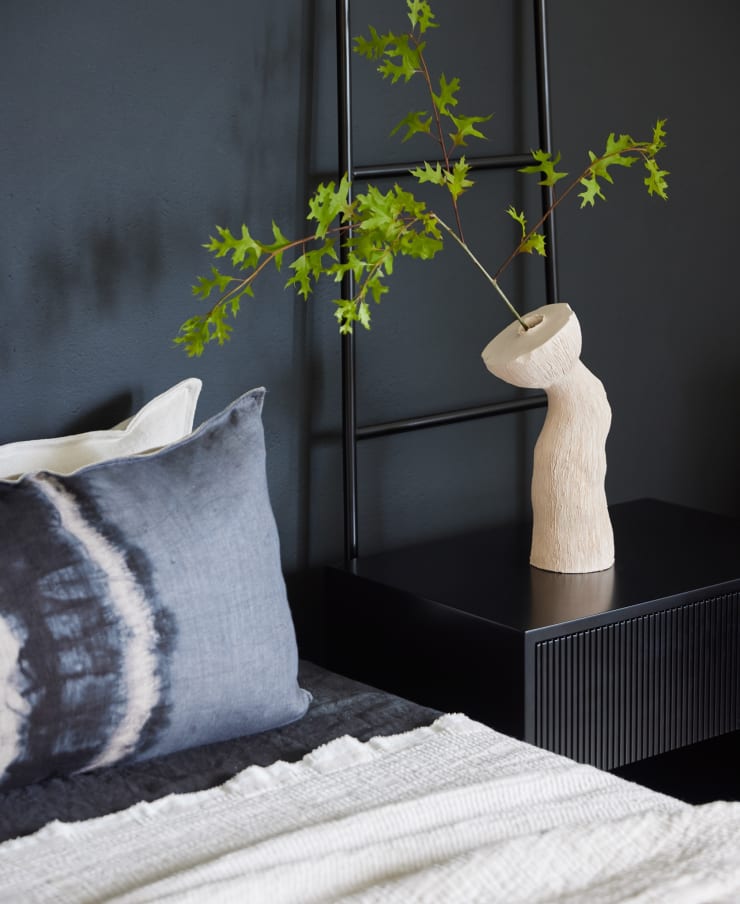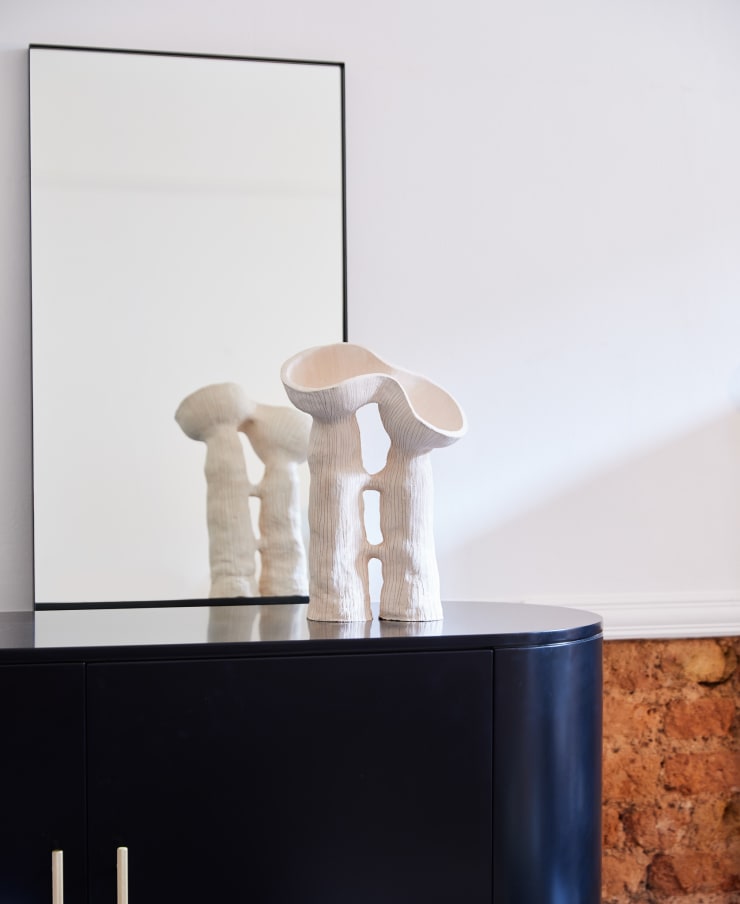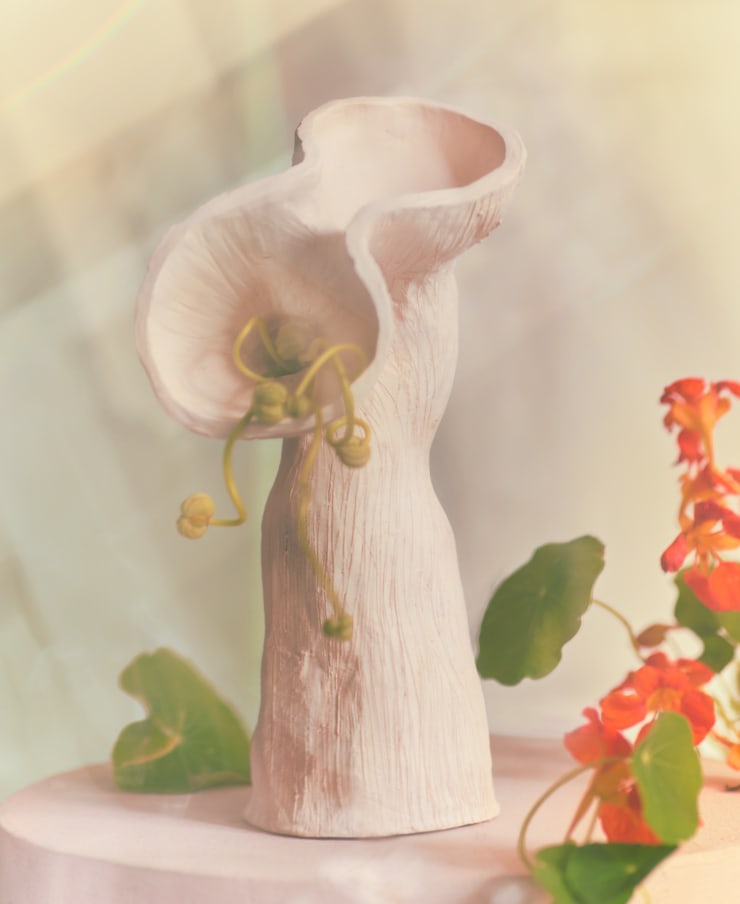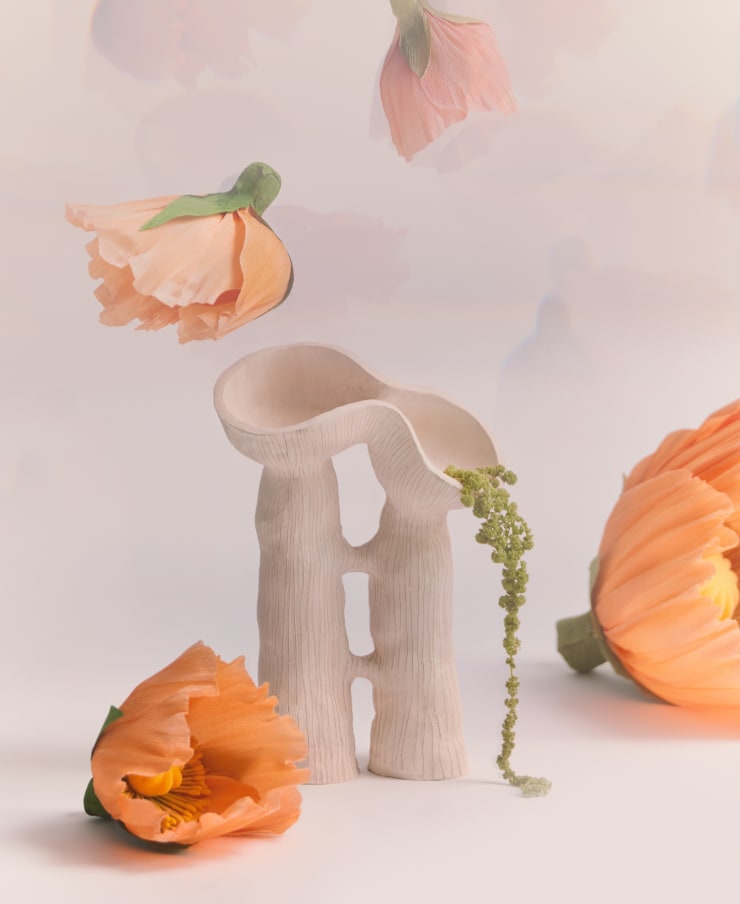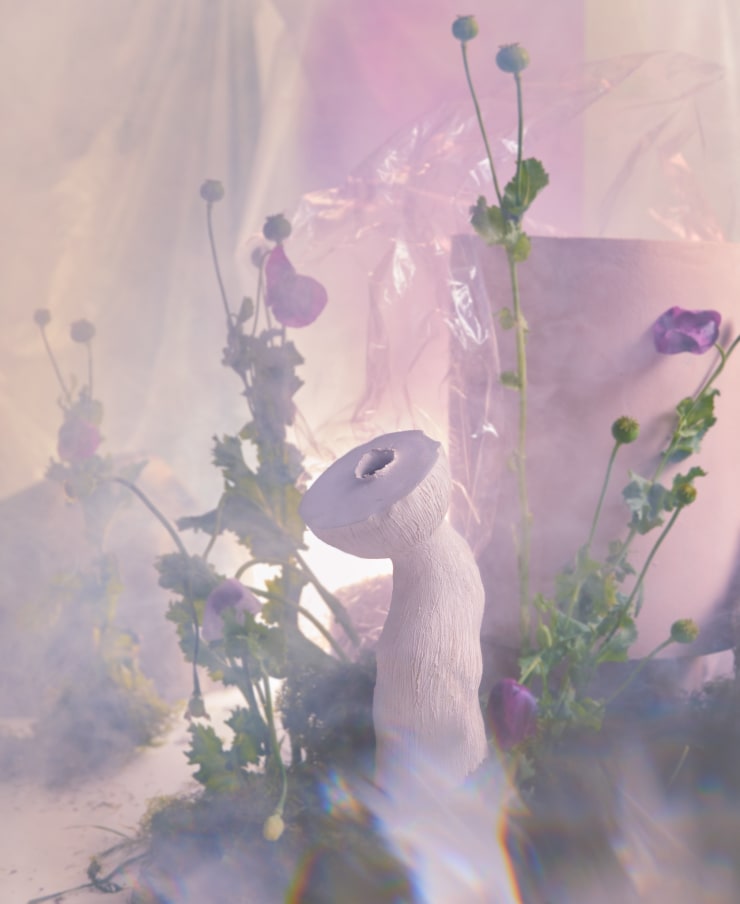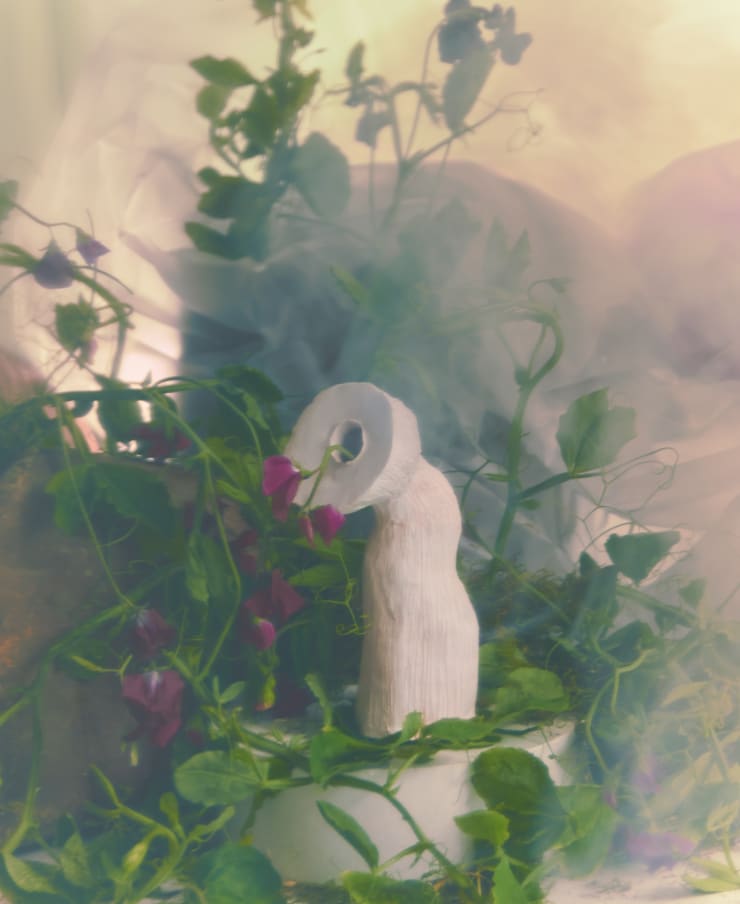Florescentia: Solo exhibition of Jan Ernst
Galerie Revel is very pleased to present FLORESCENTIA, the first solo exhibition by artist Jan Ernst de Wet with the gallery. Consisting of a series of five sculptures, the exhibition also presents a series of four unique drawings and reveals for the first time Jan Ernst's sketches often at the heart of his creative process. The exhibition will be on view online from December 1, 2021 to February 5, 2022.
The work of functional designer Jan Ernst is an aesthetic biomimetic. His creations emerge from the nature surrounding Cape Town (South Africa) and evoke emotion, reflection and function. His organic design is an ode to the simple and pure beauty of the natural world. While his previous work was inspired by the rock formations of the Cederberg for the Womb Lamp series or by coral for the Candelabra collection, this new body of work is inspired by the world of plants.
The exhibition presents a collection of five vases inspired by various plants including the lotus (Nelumbo nucifera; Nymphaea caerulea) and the poppy (paver somniferum L. subsp. nigrum) at various stages of their life. Jan Ernst was inspired by these plants because of their symbolic meaning and their fascinating three-dimensional forms.
Galerie Revel is very pleased to present FLORESCENTIA, the first solo exhibition by artist Jan Ernst de Wet with the gallery. Consisting of a series of five sculptures, the exhibition also presents a series of four unique drawings and reveals for the first time Jan Ernst's sketches often at the heart of his creative process. The exhibition will be on view online from December 1, 2021 to February 5, 2022.
The work of functional designer Jan Ernst is an aesthetic biomimetic. His creations emerge from the nature surrounding Cape Town (South Africa) and evoke emotion, reflection and function. His organic design is an ode to the simple and pure beauty of the natural world. While his previous work was inspired by the rock formations of the Cederberg for the Womb Lamp series or by coral for the Candelabra collection, this new body of work is inspired by the world of plants. The exhibition presents a collection of five vases inspired by various plants including the lotus (Nelumbo nucifera; Nymphaea caerulea) and the poppy (paver somniferum L. subsp. nigrum) at various stages of their life. Jan Ernst was inspired by these plants because of their symbolic meaning and their fascinating three-dimensional forms.
In the ancient Egypt, the blue lotus (Nymphaea caerulea) is part of the myth of the world creation and is considered as a sacred plant, associated with the god Nefertum son of Ptah and Sekhmet in the Memphite theology of the ancient Empire. Giving off a sweet fragrance, the blue lotus is most often represented by a young man wearing a lotus flower in his hair. Nefertum is the god of resurrection and immortality. The blue lotus adorns the frescoes and chapitals of Egyptian temples. The flowers and petals are part of the ceremonial ritual of the deceased. The blue lotus also appears in "The book to go out in the day" also called the book of the dead: a collection of incantations pronounced by the ritualist priest to accompany the deceased in his post-mortem transformation. In addition, the lotus flower that opens at sunrise and closes at sunset was compared to the sun god and the deployment of light out of the original silt. 'The symbolism ties into the general themes of my work i.e. rebirth, death, purity and enlightenment. The forms were interesting to explore because they are constantly changing, depending on the stage of the life cycle. When the pods are closed, they contain within them a lot of potential, but that can only be experienced once it breaks open. After flowering, the pods will decay and only an empty dry shell will remain. These shells are extremely volumetrically evocative and communicates ideas of mystery.'
The Eastern Lotus or sacred Lotus (Nelumbo nucifera or white lotus) is also considered a sacred plant in Asia. In Buddhism and Hinduism, the deities are represented on a lotus flower throne. In Buddhism the lotus represents purity of body, speech and mind, as floating above the muddy waters of attachment and desire. In his essay "About the Predilection for the Lotus Flower" the Chinese philosopher Zhou Dunyi describes the lotus flower as a symbol of purity and elegance.
Coinciding with the spring equinox in the southern hemisphere, the Seed Pod Vessel collection is a symbolic intention of the return of light and rebirth for the world following the multiple periods of pandemic-related lockdowns and the questioning that COVID has brought to our sometimes disconnected lifestyles. More than ever, it is necessary for Jan Ernst to celebrate life: ‘A big part of how I celebrate life is by spending time outdoors and interacting with nature. It was extremely difficult during lockdown to be confined to my apartment. Although I live in the city, going for hikes on the mountain and
spending time on the beach is a part of my routine. It’s simple gestures like breathing in the fresh morning air on top of Signal Hill or being able to forage mussels along the coast. These are my sources of inspiration and now more than ever, I would like to emerge myself in it.’
In a way, Jan Ernst's celebration of life echoes Friluftsliv - Life in the Open Air - the Norwegian and Swedish concept of connecting with nature more often than not. This concept is also found in Japan through the "forest baths" Shirin-Yoku.
From a structural point of view, the vases are unique pieces made of white stoneware entirely by hand. The play of contrasts between the full and empty spaces, the positive and negative spaces created by the shapes and the shadows cast by the raised elements give sacredness, life and sensitivity to the collection. The Lotus Pod Vessel takes on the shape of a lotus pod once the seeds have been scattered, while the shape of the Seed Vessel 2 evokes a poppy plant in the process of opening or a poppy in the process of blooming. The fragility of nature resonates with the medium's frailties. The clay, during and after the firing process, can break or crack at any moment. Each sculpture requires two weeks of work to achieve the final result.
Nature is never a literal translation in Jan Ernst's work. Although it is the starting point, his works are abstract interpretations and evocations of what he has experienced in contact with it. Finding inspiration in nature for Jan Ernst is a way for him to put meaning back into everyday life and to become aware of its ephemeral nature: ‘Nature is a constant reminder of how transient our existence is. It reminds us of the cycles of life and that change is the only constant. Through my work, I try to interpret themes of life and death, birth, decay, and time.’




